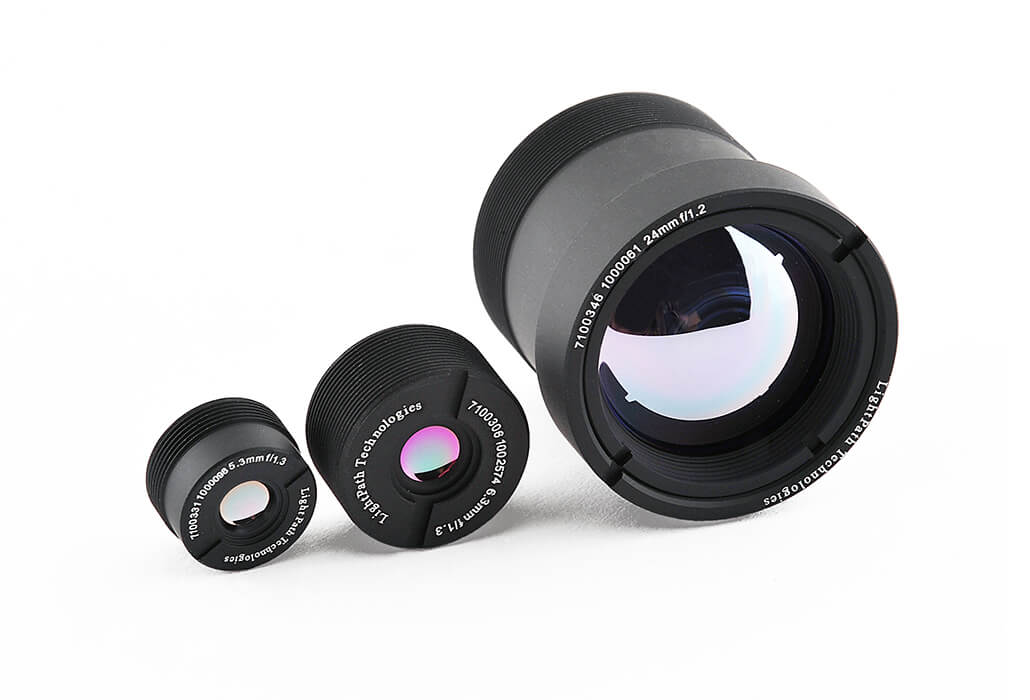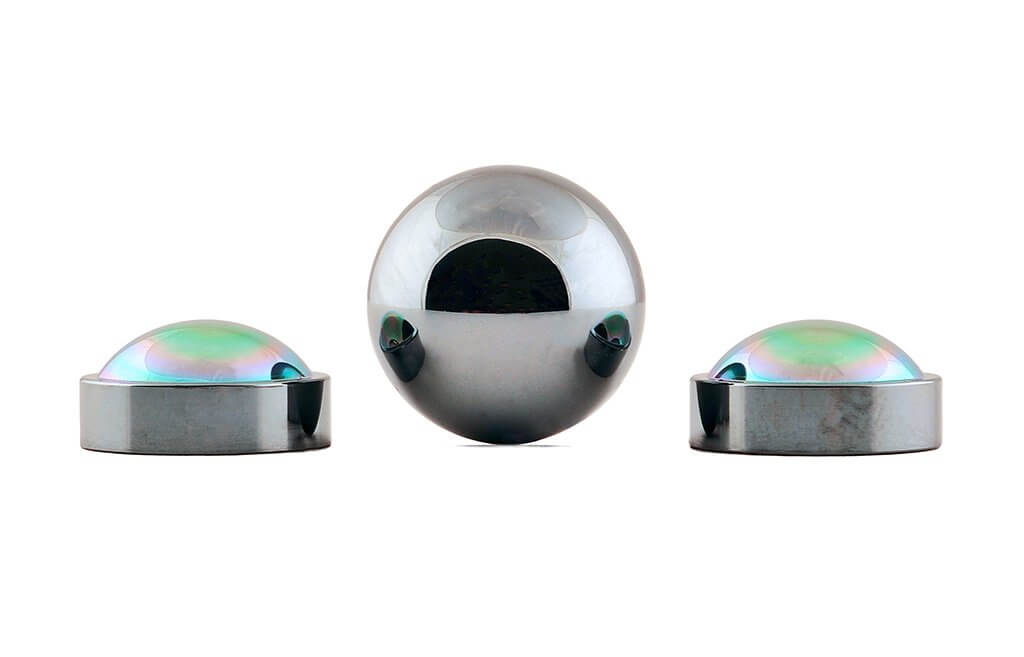
Advertorial
The pioneering company achieves the highest quality and performance quickly and cost-effectively.
Optical engineering at LightPath Technologies operates at warp speed. As a vertically integrated business that fuses world-class design and innovative lens fabrication with low-cost manufacturing, LightPath produces a diverse number and range of sophisticated products and solutions within tight timeframes. For Optical Engineering Manager Jeremy Huddleston and his team, designing for manufacturability is key to their success, and Zemax OpticStudio an essential tool in getting there.
In business for 35 years and a recognised leader in optics and photonics solutions, LightPath Technologies is headquartered in Orlando, Florida, with manufacturing plants in China and Latvia. Their customers span the industrial, defence, telecommunications, automotive, testing and measurement, and medical industries. LightPath designs, manufactures, and distributes optical and infrared components, such as moulded glass aspheric lenses and assemblies, infrared lenses, and thermal imaging assemblies, and fused fiber collimators. The company also offers full engineering design support for both optics and mechanics.
Across all these responsibilities, the optical design team is charged with supporting the company’s revenue goals by providing custom solutions that maximise value and by helping to increase profitability through cost reduction. This places enormous pressure on the designers to work at a breakneck pace. As Huddleston puts it, “Ours is a very fast-paced business where we need to turn things around quickly. We don’t have the luxury of working on individual design projects for months at a time.”

Light Path Technologies Aspheric Lenses
Low-cost, compact aspheric imaging lenses provide many benefits — and create design challenges
Designing for manufacturability is all about achieving the best possible result at a reduced cost within a given set of constraints, such as aspect ratio and lens size.
This is a tough challenge for a company like LightPath, which is at the forefront of creating compact imaging designs that fit within thinner and lighter housings.
To meet their quality mandate, they use aspheric optics for many of their flagship products. Aspheric lenses simplify and shrink optical systems by replacing several conventional lenses, and in so doing deliver optimal performance. Many businesses avoid aspheric lenses because they can be expensive to machine. However, LightPath has developing proprietary glass-moulding technology that enables cost-effective production of both low and high volumes of superior aspheric optics.
Designing for aspheric is tremendously complex, because of the exponentially larger number of possible options as compared to traditional spherical designs. Huddleston sums up the challenge.
“Compact, low-cost imaging systems have a high risk of violating standard assumptions and approximations commonly used in design. Even certain enabling technologies, such as aspheres and diffractives, increase the risk that these assumptions will be violated.”
Optical designers need to be aware of these hazards and find ways to evaluate their designs properly and proactively and report accurate metrics. At LightPath, OpticStudio is mission-critical in helping them accomplish that.
Optimisation is crucial in creating designs that overcome design limitations and deliver the highest manufacturing yield
OpticStudio empowers the designers at LightPath to create aspheric designs for manufacturability with relative ease. State-of-the-art optimisation tools in OpticStudio automatically improve the performance of optical designs based on user-defined constraints and design goals.
On any given project, Huddleston will use local and global optimisation, hammer optimisation (which allows you to look for other design solutions outside the local space you are in), and sometimes even contrast optimisation.
“Typically, we optimise on spot size, wavefront, or directly on MTF, but having the option to also use contrast optimisation can be very useful.”
Huddleston also values the ability to write custom merit functions.
“The merit function allows me as a designer to choose the direction of the optimisation, rather than just pushing a button and seeing what the software comes up with. It’s very interactive, and it lets me use my intuition and expertise to direct the design.”
Another way LightPath innovates is in using only glass and not plastic. Glass is more durable, and the optics are more precise. But glass can be a challenge as there are hundreds of materials to choose from. Zemax streamlines that by including a glass substitution algorithm.
As is clear, there are many tools in the OpticStudio optimisation toolbox, and it is one of the things Huddleston appreciates most about the software.
“Having multiple ways to optimise is really important. And it is easy to use different techniques at different points in the process. This lets me work in the most efficient way possible.”
User-defined macros also save time and streamline the workflow
The Zemax Programming Language (ZPL) in OpticStudio enables designers to write their own macros to automate repetitive processes, a feature Huddleston values.
“I love that we can write our own sub-routines right within the Zemax software. I do not have to go out and do something in C++ or some other programming language when I want specific types of analyses or calculations. I can even optimise on a macro.”
This has been especially beneficial because of the reality of being constrained by small focal lengths and a small number of surfaces. Because of these conditions, the standard use of paraxial approximations for determining the focal length, the field of view, and the F-number of a lens basically do not apply. The solution in OpticStudio is writing a macro and working with a merit function to determine the best method for measuring parameters on those lenses, and then optimising on that method as opposed to paraxial approximations. This ensures that they achieve the same values as those in the optical design.
Benefits of using OpticStudio
All these features in OpticStudio save time for LightPath designers by eliminating design iterations. Equally important to Huddleston are the savings further downstream.
“It’s really costly if a prototype doesn’t work and you have to start over. With OpticStudio, you do not have to wait until you build something to see where you might be off — which you then must go back and correct. OpticStudio helps us mitigate risk for our customers by being able to better predict how a design will perform. That saves time and money.”
For Huddleston, it all comes down to flexibility. “With OpticStudio, I can optimise not only on performance but also on manufacturability. Using merit function operands, macros, and optimisation tools, it is easy to put parameters around manufacturability.”
Easing the expansion into the use of infrared optics
Infrared optics are a growth market for LightPath, and OpticStudio helped the design team come up to speed more quickly in developing innovative, custom thermal assemblies.
Infrared lenses are designed for thermal imaging cameras operating in the mid-wave and long-wave infrared (MWIR, LWIR) bands for applications such as thermography, diagnostics, security, and surveillance. Infrared systems may be used for gas sensing devices, spectrometers, night vision systems, automotive driver awareness systems including blind spot detection, thermal weapon sights, and infrared countermeasure systems. LightPath uses BD6 Chalcogenide glass in their thermal lenses, which can be moulded, polished, or diamond-turned, and which offers exceptional optical quality, low cost, light weight, and optical a thermalisation.
OpticStudio simplified the adoption of this new infrared-transmission material by enabling Huddleston to add custom materials instead of being limited to the library of materials provided with the software.
Further, OpticStudio made it easy to overcome one problem that can occur with BD6 and which may degrade imaging quality. That challenge is chromatic aberration. To address this, OpticStudio enables LightPath to apply a diffractive surface for colour correction.
In whatever ways LightPath evolves, Huddleston can count on OpticStudio to provide the flexibility and precision to create or enhance exceptional designs that can be manufactured efficiently and accurately.
About Zemax
Zemax’s industry-leading optical software, OpticStudio®, OpticsBuilder™, and OpticsViewer™, helps optical, mechanical, and manufacturing engineering teams turn their ideas into reality. Standardising on Zemax software reduces design iterations and repeated prototypes, speeding time to market and reducing development costs. Zemax touches nearly every optical system manufactured today, including virtual reality systems, cell phone cameras, autonomous-vehicle sensor systems, and intraocular lenses—even imaging systems for the Mars Rover. By listening to customers, Zemax delivers unmatched value and have the largest, most passionate user base in the industry.
News & Analysis



